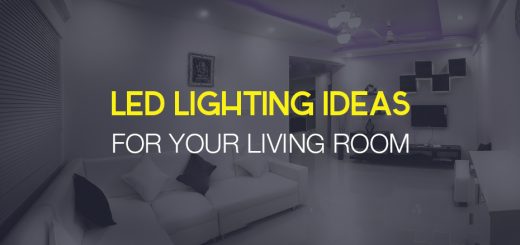Tips On Lighting Your Warehouse
There are lots of things to consider when it comes to warehouse lighting. There are various warehouse lighting standards that you’ll need to familiarize yourself with, as well as a myriad of warehouse lighting design choices to choose between. Excluding the necessary safety guidelines, however, what are some of the better tips on lighting your warehouse in the best, most practical and comfortable way? Let’s go over some of the best tips you might know so that you can prepare and execute an optimal warehouse lighting plan.
To know what lighting your warehouse needs, let’s go over the main warehouse lighting requirements – what are the key characteristics that most warehouses share:
- Warehouses have few windows.
- Warehouses have high ceilings.
- Warehouses include elevated shelves.
- Warehouses usually have wide and large floor surfaces.
These key points are typically true for most warehouses, but just like people, warehouses can have their own unique differences. So, the first tip is:
Consider if there is anything unique about your warehouse
Are there more windows than the standard few, for example? Can you use the combination of excess windows with fewer warehouse lights to your advantage? Is your ceiling lower or multileveled, allowing for fewer warehouse lights to cover larger cubic areas with light? There is much more to warehouse lighting than just slapping several UFO lights at equal intervals on the ceiling – the lighting should be customized based on the layout of the warehouse so that everything is lit in the best possible way and you aren’t left with some lighter and some darker areas.
Figure out the best arrangement for your warehouse
When preparing your warehouse lighting plan take a moment or two to figure out if you can rearrange your warehouse’s contents in a more practical way. Different warehouse lights are intended for different parts of warehouses. Linear aisle lights, for example, are meant for low lighting over aisles. Panel high bays, on the other hand, are meant to singlehandedly cover larger areas than a regular UFO light. So, are there ways to rearrange the contents of your warehouses so that it requires more practical, efficient and economical lighting.
Also, make sure to keep in mind that whatever arrangement you decide on is viable for the long term. Warehouse lighting is usually tricky to rearrange so if you swap some of the contents or design choices of your warehouse’s layout in a few months, then the recently-installed lighting will stop being as effective as it was at first. In other words, consider whether the warehouse layout you settle on will remain in such a state for a while.
Choose the best type of warehouse lighting for the situation
There are 3 main types of warehouse lights – LED, fluorescent and HID (High-intensity discharge) bulbs. Each of them has its positives and negatives:
- LED is the most popular type of warehouse lighting nowadays for several reasons – LED (light emitting diodes) is much more cost-efficient than HID and fluorescent because it consumes less energy. LED also offers warmth-free light that’s suitable for any situation regardless of what you’re storing. LED also has a significantly longer lifespan than other lights with good LED light fixtures reaching up to 50,000 hours of work life. LED used to be more expansive than HID and fluorescent lighting but it isn’t anymore. One drawback of LED that still persists, however, is the fact that it produces a spotlight effect wherever they shine. Simply put, industrial LED lighting fixtures look like laser beams in that their light is very directional. This can be especially unpleasant in warehouses where workers might get blinded by looking into the LED light fixtures and get into unpleasant accidents. This drawback of LED lights can be overcome, fortunately, by the use of reflectors. Some of the better warehouse LED lighting fixtures on the market are made in such a way as to reduce the glare of the LED lights and ensure a safer workplace.
- Fluorescent lights’ main advantage is precisely the key disadvantage of LED lights – they don’t produce glare. This makes them great for work environments such as warehouses, however, fluorescents have their own set of drawbacks – they are not as energy-efficient as LED lights, they have mercury running through them so disposing of them is much harder, and they produce a type of light that most people find less visually appealing than LED or HID lights. For these reasons, fluorescent lights have been slowly going out of style in recent years.
- HID light bulbs used to be the traditional choices for both commercial and residential lighting for years before LED came around. HID bulbs don’t produce as much glare as LED even though they too can be a bit hard on the eyes when looked at directly. HID fixtures typically use reflectors to better distribute the bulb’s light on the target area, so the exact design of the fixture is quite important for the overall effect. HID too have a significant amount of drawbacks that pulled them away from the top spot, however – they are less energy-efficient than LED and their light produces a fair bit of warmth which makes them impractical for a lot of warehouses that need to maintain low room temperature.
Consider the color of the light
The color of the light you’re using is important not just for aesthetical reasons but also because it affects things such as contrast and clarity. If workers are going to be walking around your warehouse, constantly reading labels, you’ll do well to give them the best possible reading light. The Colour Rendering Index (CRI) is the one to pay attention to in that regard – the higher the index, the better the light will be for reading, with 85 being the minimum number you shouldn’t go below.
Choose the best long-term option energy-wise
People often underestimate the long-term cost of warehouse lighting. The fact of the matter is that the initial price of the lighting system purchase and installation will pale in comparison to the electricity bills you’ll have to pay in the next few years or decades. So, if you intend to use your warehouse for a long time, make sure that you choose the most energy-efficient option as long as don’t compromise other aspects of the warehouse lighting plan.



